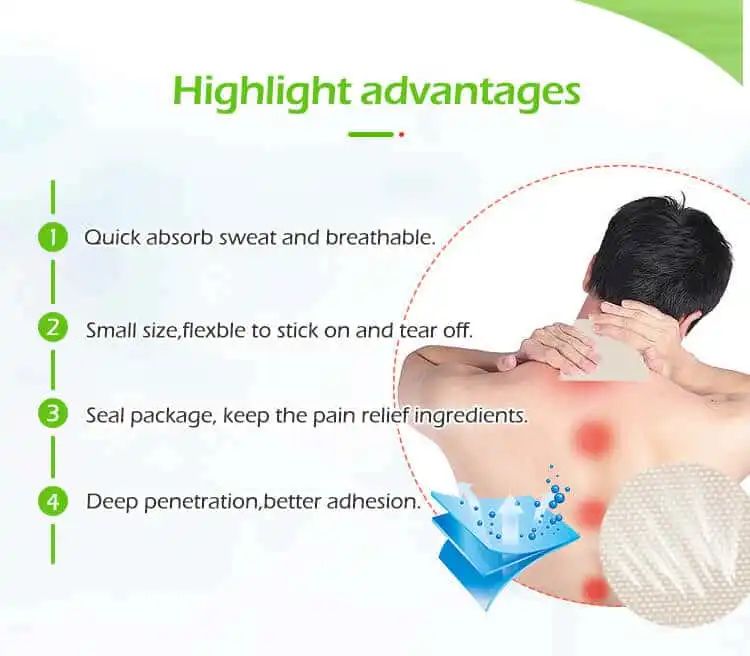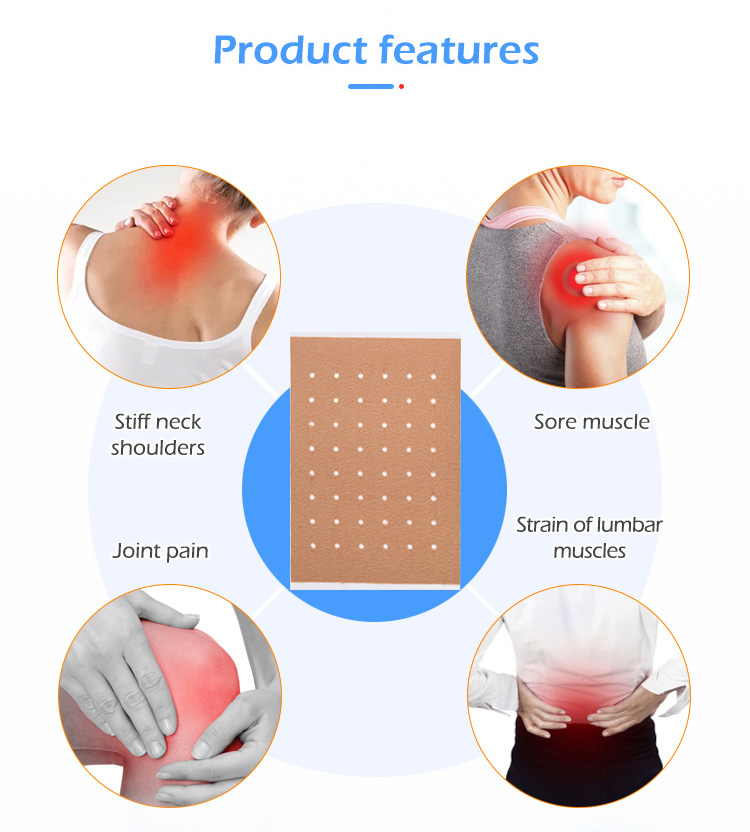What Regulatory Concerns Should I Consider When Selling Herbal Pain Patches?
Selling Herbal Pain Patches is an excellent business opportunity in today’s market, especially with increasing consumer demand for natural pain relief solutions. However, before you can launch your product successfully, there are a number of regulatory concerns that you must address. These concerns are crucial to ensuring that your products are not only effective but also safe and compliant with laws in various markets.
In this article, we will delve into the regulatory concerns you should consider when selling Herbal Pain Patches. Whether you are working with a Herbal Pain Patches Manufacturer, a Herbal Pain Patches OEM, or developing your own Custom Herbal Pain Patches, it’s essential to understand the various regulatory frameworks that govern these products. Compliance with these regulations helps avoid legal issues, safeguard your brand’s reputation, and ensure that your customers are receiving products that meet the highest standards of safety and efficacy.

1. Understanding the Regulatory Classification of Herbal Pain Patches
One of the first steps in navigating regulatory concerns is understanding how your product is classified. Depending on the claims you make about your Herbal Pain Patches, they could be classified as either a medical device, a drug, or a cosmetic.
Medical Device vs. Drug vs. Cosmetic:
Medical Device: If your herbal pain patches are intended to treat or alleviate pain through physical or therapeutic means, such as through controlled delivery of active ingredients like menthol or camphor, they could be classified as a medical device. In this case, your Herbal Pain Patches Supplier or OEM Manufacturer must comply with specific regulatory standards, such as FDA’s medical device regulations in the U.S. or CE marking requirements in Europe.
Drug: If you are claiming that your Herbal Pain Patches can cure or prevent diseases, or make therapeutic claims like treating arthritis or chronic pain, your product may be classified as a drug. In this case, your product would be subject to stricter approval processes, such as clinical trials, and approval by regulatory agencies like the U.S. FDA or the European Medicines Agency (EMA).
Cosmetic: If your herbal pain patches are marketed as products that only provide temporary relief or enhance the skin without making therapeutic claims, they may be considered cosmetics. However, this classification still requires compliance with general safety standards for cosmetics.
Why It Matters:
Understanding the classification is essential because it determines which set of regulations your product will need to comply with. The regulatory requirements for a medical device are much stricter than those for a cosmetic, affecting everything from manufacturing practices to labeling and marketing.
2. FDA and CE Marking Compliance
In many markets, including the U.S. and Europe, Herbal Pain Patches are subject to regulatory oversight. In the U.S., the FDA (Food and Drug Administration) regulates medical devices, drugs, and cosmetics, while in Europe, the CE marking is required to demonstrate product compliance with EU health and safety standards.
FDA Compliance:
Class I, II, or III: If your herbal pain patches are considered medical devices, they will be classified into one of three categories: Class I, Class II, or Class III. Class I devices are generally considered low-risk, while Class III devices are high-risk and require pre-market approval, including clinical testing.
FDA Registration and Listing: Your Herbal Pain Patches Manufacturer or OEM must register their establishment with the FDA, and the product itself must be listed in the FDA database.
510(k) Pre-market Notification: If your product is classified as a medical device, you may need to submit a 510(k) pre-market notification, proving that your patch is substantially equivalent to a device already on the market.
CE Marking:
Medical Device Regulation (MDR): In Europe, herbal pain patches that are intended for medical purposes must comply with the Medical Device Regulation (MDR) and carry the CE mark. This process ensures that the product meets EU safety, health, and environmental protection standards.
Why It Matters:
Both FDA and CE compliance are necessary for selling Herbal Pain Patches in the U.S. and European markets. These regulatory approvals help ensure the product is safe, effective, and legally marketable in these regions.
3. Labeling and Marketing Claims
Proper labeling is essential for ensuring regulatory compliance, and this is where many businesses encounter issues. Incorrect claims or misleading information can not only lead to legal consequences but can also damage your brand’s reputation.
Key Labeling Considerations:
Ingredient Transparency: Clearly list all ingredients used in your Custom Herbal Pain Patches on the label. Some ingredients, such as menthol, camphor, and arnica, must be listed in specific quantities to meet regulatory requirements.
Warning and Directions: Provide proper warnings regarding the potential side effects of using the patches, such as skin irritation or allergic reactions. Include clear usage instructions, such as how long the patch should be worn and any contraindications.
Health Claims: Be cautious about the claims you make on your labels. In many jurisdictions, making therapeutic claims (such as "cures arthritis" or "relieves chronic pain") could classify your product as a drug, subjecting it to stricter regulations. Ensure that any claims you make are supported by scientific evidence and align with regulatory guidelines.
Why It Matters:
Proper labeling ensures compliance with regulatory standards and avoids any misleading claims. This helps protect both your customers and your brand’s reputation.
4. GMP (Good Manufacturing Practices) Compliance
When dealing with any Herbal Pain Patches Supplier or OEM Manufacturer, you need to ensure that they follow Good Manufacturing Practices (GMP). GMP ensures that the manufacturing process is consistent, clean, and adheres to the highest quality standards.
GMP Requirements for Herbal Pain Patches:
Quality Control: Ensure that the manufacturer performs quality control tests on raw materials, intermediate products, and finished products. This guarantees that your patches are effective and safe.
Traceability: GMP-compliant suppliers maintain thorough records of the production process, ensuring that each batch of patches can be traced back to the source of ingredients, manufacturing equipment, and personnel involved in production.
Clean Manufacturing Facilities: The facility must be free from contamination and must meet health and safety standards to prevent any harmful substances from contaminating the product.
Why It Matters:
GMP compliance ensures that the Herbal Pain Patches are produced under controlled conditions, minimizing the risk of contamination or quality issues. It also enhances customer trust and reduces the likelihood of legal issues due to unsafe products.
5. Environmental and Sustainability Regulations
As consumers become more eco-conscious, sustainability has become an important consideration for businesses in the personal care and health industries. Environmental regulations may vary by region but are increasingly important in packaging, production, and disposal.
Sustainability Considerations:
Eco-friendly Packaging: Make sure that the packaging of your Private Label Herbal Pain Patches complies with local environmental regulations, especially if you're marketing in eco-conscious markets.
Sustainable Sourcing of Ingredients: Many suppliers now follow sustainable sourcing practices for their herbal ingredients. Ensure that your Herbal Pain Patches Supplier is transparent about where and how they source their materials to meet environmental standards.
Why It Matters:
Sustainability is not only an important regulatory concern but also a significant market trend. Meeting these standards can help build your brand’s reputation while ensuring that your business adheres to ethical and environmental guidelines.
6. Frequently Asked Questions (FAQs)
1. What are the primary regulatory concerns when selling herbal pain patches?
The primary concerns are the classification of your product (medical device, drug, or cosmetic), compliance with FDA or CE standards, labeling regulations, GMP adherence, and sustainability considerations.
2. Do I need FDA approval for herbal pain patches?
If your herbal pain patches are classified as a medical device or drug, you may need FDA approval. Products marketed as cosmetics typically don’t require FDA approval but must still comply with labeling and safety standards.
3. What is the difference between a medical device and a cosmetic in herbal pain patches?
A medical device is intended to treat or alleviate a specific health condition and is subject to more stringent regulations. A cosmetic primarily enhances appearance or provides temporary relief without therapeutic claims.
4. How do I ensure that my herbal pain patches are GMP-compliant?
Choose a supplier or manufacturer who follows Good Manufacturing Practices, ensuring that production processes are clean, controlled, and consistent to avoid contamination and ensure product safety.
5. Can I make health claims about my herbal pain patches?
Be cautious about health claims. If your patches are marketed as medical devices, claims must be supported by clinical evidence. Misleading or unsupported claims may classify your product as a drug, requiring more rigorous regulatory approval.
Conclusion
Regulatory compliance is a critical component of selling Herbal Pain Patches. Understanding the classification of your product, ensuring FDA or CE compliance, adhering to GMP standards, and following proper labeling practices are essential steps to ensure that your product is safe, effective, and legally compliant. By addressing these concerns early in the process, you can avoid legal issues, ensure customer trust, and establish a successful brand in the growing herbal pain relief market.






